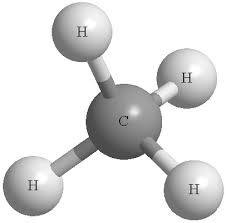Carbon dioxide to methane
Prof Vivek Polshettiwar of the Tata Institute of Fundamental Research has developed a process for converting Carbon dioxide, a greenhouse villain, into useful methane, using silica as catalyst.
Scientists the worldover have been trying various ways to convert CO2 into methane, but all these processes use metal nanoparticles as catalysts.
Conversion of CO2 into methane has significant advantage over several other green technologies because it also enables storage of Hydrogen, a good energy carrier, in the form of methane. CO2 conversion to methane using renewable hydrogen has the great potential to provide a solution to these two problems of excessive CO2 levels, and the temporal mismatch between renewable electricity production and demand as well as hydrogen storage.
The best-known catalysts for CO2 methanation are supported nanoparticles of metals. However, most of them suffer from the issue of stability as well as selectivity towards methane over CO. A good way to resolve the issue of catalyst stability is by replacing active sites (metal nanoparticles) with metal-free active sites which are catalytic as well as stable even in an air environment at high temperatures.
Dr Polshettiwar engineered a new catalyst—defected silica. (‘Defecting’ is a way of creating a ‘vacancy’ in the molecule by knocking off an atom. Silica is made of a network of Silicon (Si) and Oxygen (O), where a Silicon atom attaches itself to 4 Oxygen atoms. If you remove one Oxygen atom from the network, you create a ‘defect site’ or a ‘vacancy site’.) The defect sites alone acted as catalytic sites for carbon dioxide activation and hydrogen dissociation and their cooperative action converted CO2 to methane.
Dr Polshettiwar’s process involves, passing CO2 and H2 gas at atmospheric pressure through defected silica bed, which is heated at 400 degrees C. No high pressure is needed. Efforts are on to improve the process so that it works under ambient room temperatures.
The catalyst is recyclable and stable for more than 200 h with 10000 µmoles g-1 h -1 of productivity for methane. Notably, unlike expensive metal catalysts, the catalytic activity for methane production increased significantly after every regeneration cycle, reaching more than double the methane production rate after eight regeneration cycles as compared to the initial catalyst performance. The spectroscopy studies gave atomistic insights into the various defect sites (Si radical centers, O-vacancy, and non-bridging oxygen hole centres) in terms of their concentrations, proximity, and cooperativity.
In-Situ spectroscopy study provided mechanistic insights at a molecular level, indicating possible pathways for CO2 conversion to methane and carbon monoxide, which was further confirmed by computational study in collaboration with Prof. Ayan Datta of Indian Association of Cultivation Science (IACS), Kolkata.
Also read: IIT-M professor develops ultra-light, super-strong Magnesium alloy
Please leave a comment



